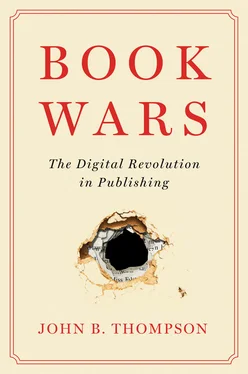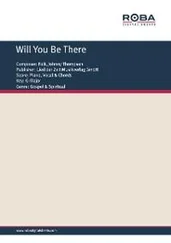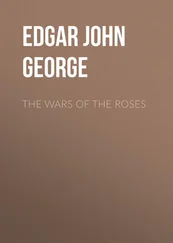This cursory glance at patterns in Europe and elsewhere highlights the enormous variability in the ways in which the digital revolution has affected the book publishing industry in different countries and regions of the world, and underscores the fact that one cannot generalize from the US experience. Indeed, so far from being the harbinger of future developments globally, the US experience may turn out to be the exception – we simply don’t know. For the extent to which ebooks replace traditional print-on-paper books depends not only on the type of book, but also on a host of factors such as the role of large corporations like Amazon and the extent to which they have invested, or might be willing to invest, in creating platforms and distribution systems; the availability of reading devices that are attractive and affordable for local populations; the availability of desirable content in appropriate languages and formats; the different pricing and taxation regimes that apply and, in particular, whether there is a fixed price regime that forbids or limits the discounting of books – this factor alone can make a huge difference to the attractiveness or otherwise of ebooks; and the role that governments, legislators and judicial authorities might play in regulating practices and adjudicating disputes – not to mention the cultural tastes, preferences and practices of readers, all of which may vary considerably from one country, region, culture and linguistic regime to another. There is no reason to assume that the digital revolution will disrupt the publishing industry in the same way everywhere, sweeping through it like a technological tsunami, and the evidence to date suggests that this is not what is happening. Rather than a single consistent pattern, we see enormous variability in levels of digital uptake in trade publishing, with the US and, to a lesser extent, the UK standing out as the two countries where ebooks have become a major revenue stream, but where the surge has now subsided, at least for the time being.
1 1 UNESCO, ‘Recommendation Concerning the International Standardization of Statistics Relating to Book Production and Periodicals’ (19 November 1964), at http://portal.unesco.org/en/ev.php-URL_ID=13068&URL_DO=DO_TOPIC&URL_SECTION=201.html.
2 2 Nicole Yankelovich, Norman Meyrowitz and Andries van Dam, ‘Reading and Writing the Electronic Book’, Computer, 18, 10 (October 1985), 15–30.
3 3 See Michael Hart, ‘The History and Philosophy of Project Gutenberg’, at www.gutenberg.org/wiki/Gutenberg:The_History_and_Philosophy_of_Project_Gutenberg_by_Michael_Hart; Marie Lebert, A Short History of eBooks (NEF (Net des études françaises / Net of French Studies), University of Toronto, 2009), pp. 5ff., at www.etudes-francaises.net/dossiers/ebookEN.pdf.
4 4 The data from the Association of American Publishers are based on primary data for around 1,200 publishers from 2011 onwards; data for 2008 to 2010 were adjusted to account for participant and definitional changes.
5 5 In juvenile and some categories of adult books such as mystery and science fiction, there is a significant gap between the percentages for revenue and for units, where ebook sales in dollars account for a higher percentage of total sales than ebook sales in units. This might seem counter-intuitive, in so far as ebooks are generally priced lower than print books, and hence one might expect that percentages for net dollars would, if anything, be lower than percentages for net units. So what explains this seemingly counter-intuitive discrepancy? The explanation lies in the technical details of the settlement agreement imposed on publishers by the Department of Justice in the wake of the price-fixing suit (see chapter 5). The settlement banned the publishers concerned from using the agency model for two years, but allowed them to use a pricing model – dubbed ‘Agency Lite’ – which is similar to agency but which allows the retailer to discount titles, provided that the total amount of discount is not less than their cost for the publisher’s entire catalogue over a one-year period. What this meant in practice is that retailers could discount specific titles, and they did so very heavily in some cases, e.g. selling ebooks for certain bestselling titles as low as $2.99. At various peak times – holiday seasons, the release of a new movie, etc. – one retailer might fund a special promotion by dropping the price and other retailers would follow. This was particularly common in certain categories of books, such as juvenile, mystery and sci-fi. Millions of ebooks were sold at very low prices, but under the terms of Agency Lite, the publisher was paid on full list price. Hence, Agency Lite tended to inflate the dollar percentages of ebook sales.
6 6 BISAC subject headings, also known as BISAC subject codes, are produced by BISG, the Book Industry Study Group, and used by many companies in the book supply chain to categorize books based on their subject matter. The full list of subject headings can be found at www.bisg.org/bisac-subject-codes.
7 7 Here, ‘general fiction’ includes all the categories of fiction except mystery, romance, sci-fi and fantasy, which are broken out separately. So ‘general fiction’ includes the BISAC categories Literary Fiction, General Fiction, Historical Fiction, etc. – there are dozens of categories; the only categories it doesn’t include are Mystery, Romance, Science Fiction and Fantasy.
8 8 With juvenile fiction, it is important to note that this category includes both children’s books and young adult fiction, and these two sub-categories display very different patterns. If you separated juvenile fiction into young adult and non-young-adult, non-young-adult would be much lower – under 5% – while young adult would be somewhere in the 20s. Young adult fiction behaves a bit more like general fiction for adults – indeed, some books that are categorized as young adult, such as Stephanie Meyer’s ‘Twilight’ series and the Hunger Games trilogy, are likely to be read by readers of different ages, including many adults.
9 9 Robert Darnton, ‘A Historian of Books, Lost and Found in Cyberspace’, Chronicle of Higher Education, 12 March 1999; Robert Darnton, ‘The New Age of the Book’, New York Review of Books, 18 March 1999. Both are reprinted in Robert Darnton, The Case for Books: Past, Present, and Future (New York: Public Affairs, 2009).
10 10 Jeremy Lewis, Penguin Special: The Life and Times of Allen Lane (London: Penguin, 2005), p. 74.
11 11 Quoted in ibid., p. 96.
12 12 Quoted in ibid., p. 94.
13 13 Amazon developed a parallel self-publishing platform for print, called CreateSpace, but many authors publishing through Kindle Direct do not release print editions – more on this in chapter 7 below.
14 14 Again, more on this in chapter 7 below.
15 15 Relevant data can be found in the PA Statistics Yearbook 2015 (London: The Publishers Association, 2016) and the PA Statistics Yearbook 2018 (London: The Publishers Association, 2019). However, in the PA Statistics Yearbook, ‘digital sales’ include more than ebooks: it includes ebooks, audiobook downloads, downloads of all/part of books, subscriptions/access to online book publications, and any other wholly digital material delivered online or via CD-Rom (PA Statistics Yearbook 2018, Technical Appendix A, p. 83). My figures are based on supplementary data provided by Nielsen and the Publishers Association, which separate out consumer ebook sales from the broader category of ‘digital sales’.
16 16 Rüdiger Wischenbart, together with Carlo Carrenho, Javier Celaya, Yanhong Kong and Miha Kovac, Global eBook 2017: A Report on Market Trends and Developments, at www.global-ebook.com.
17 17 Börsenverein, reproduced in ibid., p. 65.
Читать дальше












